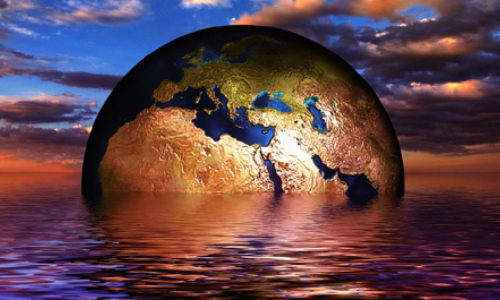Live
- Gurumurthy takes charge as chief of Gowda Corpn
- Study warns: Ultra-processed foods may accelerate biological age
- CM pledges more political opportunities to Madigas
- Year-Ender 2024 Guide: Home remedies to relieve Period Pain.
- All India crafts mela begins today
- TTD gears up for Vaikunta Ekadasi fete
- Vizag attracts tourists as much as Kashmir
- Express Yourself
- Rajadhiraaj: Love. Life. Leela
- Students immerse in nature in Chilkur forest
Just In

The record showed that atmospheric oxygen has declined 0.7 per cent relative to current atmospheric-oxygen concentrations, a reasonable pace by geological standards, the researchers said. During the past 100 years, however, atmospheric oxygen has declined by a comparatively speedy 0.10 per cent because of the burning of fossil fuels, which consumes oxygen and produces carbon dioxide.
New York : Driven by burning of fossil fuels, which consumes oxygen and produces carbon dioxide, the rate of oxygen decline from the Earth's atmosphere has speeded up over the past 100 years, says a study.Researchers from Princeton University compiled 30 years of data to construct the first ice core-based record of atmospheric oxygen concentrations spanning the past 800,000 years, according to the paper published in the journal Science.
The record showed that atmospheric oxygen has declined 0.7 per cent relative to current atmospheric-oxygen concentrations, a reasonable pace by geological standards, the researchers said. During the past 100 years, however, atmospheric oxygen has declined by a comparatively speedy 0.10 per cent because of the burning of fossil fuels, which consumes oxygen and produces carbon dioxide.
This record represents an important benchmark for the study of the history of atmospheric oxygen," said Assistant Professor of Geosciences John Higgins. Understanding the history of oxygen in Earth's atmosphere is intimately connected to understanding the evolution of complex life," Higgins noted.
Curiously, the decline in atmospheric oxygen over the past 800,000 years was not accompanied by any significant increase in the average amount of carbon dioxide in the atmosphere, though carbon dioxide concentrations do vary over individual ice age cycles.
To explain this apparent paradox, the researchers called upon a theory for how the global carbon cycle, atmospheric carbon dioxide and the Earth's temperature are linked on geologic timescales.
The planet has various processes that can keep carbon dioxide levels in check," said first author Daniel Stolper.The researchers discussed a process known as "silicate weathering" in particular, wherein carbon dioxide reacts with exposed rock to produce, eventually, calcium carbonate minerals, which trap carbon dioxide in a solid form.
The Earth can take care of extra carbon dioxide when it has hundreds of thousands or millions of years to get its act together. In contrast, humankind is releasing carbon dioxide today so quickly that silicate weathering can't possibly respond fast enough," Higgins noted.
The Earth has these long processes that humankind has short-circuited," Higgins said. The researchers built their history of atmospheric oxygen using measured ratios of oxygen-to-nitrogen found in air trapped in Antarctic ice. This method was established by co-author Michael Bender.

© 2024 Hyderabad Media House Limited/The Hans India. All rights reserved. Powered by hocalwire.com







